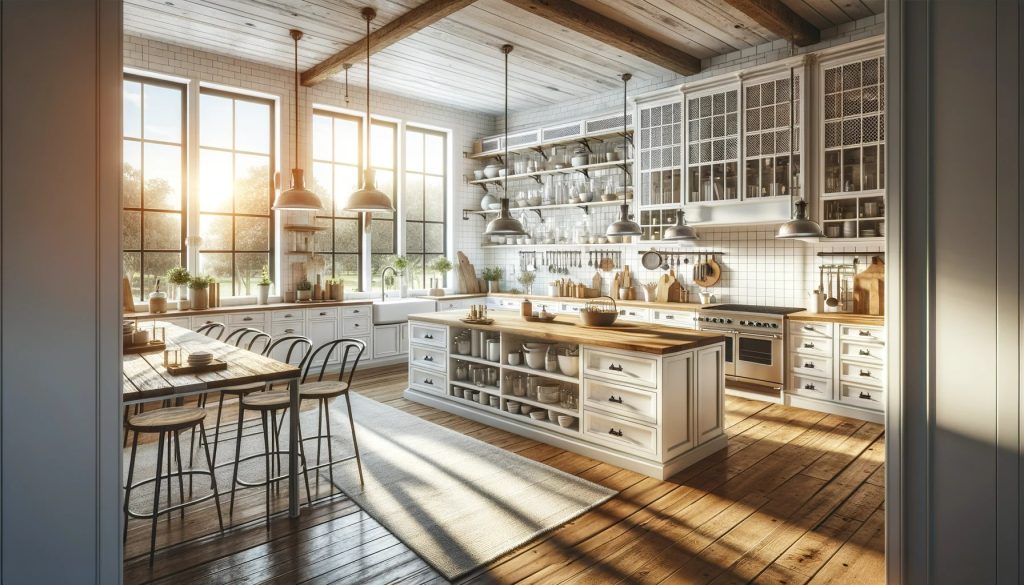Rustic Kitchen Design in Gotham
Rustic kitchen design is a popular trend that brings a sense of warmth and homeliness to any home. With its focus on natural materials, cozy finishes, and a laid-back atmosphere, it’s no surprise that rustic kitchens have become a staple in homes across the US. Here, our Lead Wolf design experts will explore the rich history of rustic kitchen design, delve into current trends and offer essential tips for your upcoming remodel. And if you’re wondering about the budget? We’ll provide an overview of the average price range for a rustic kitchen remodel, along with our tips on what to avoid when designing your dream rustic kitchen.
Whether you’re just starting to research rustic kitchen design or you’re all set to roll with your project, our expert kitchen designers are here to guide you every step of the way towards achieving the perfect rustic kitchen for your home.
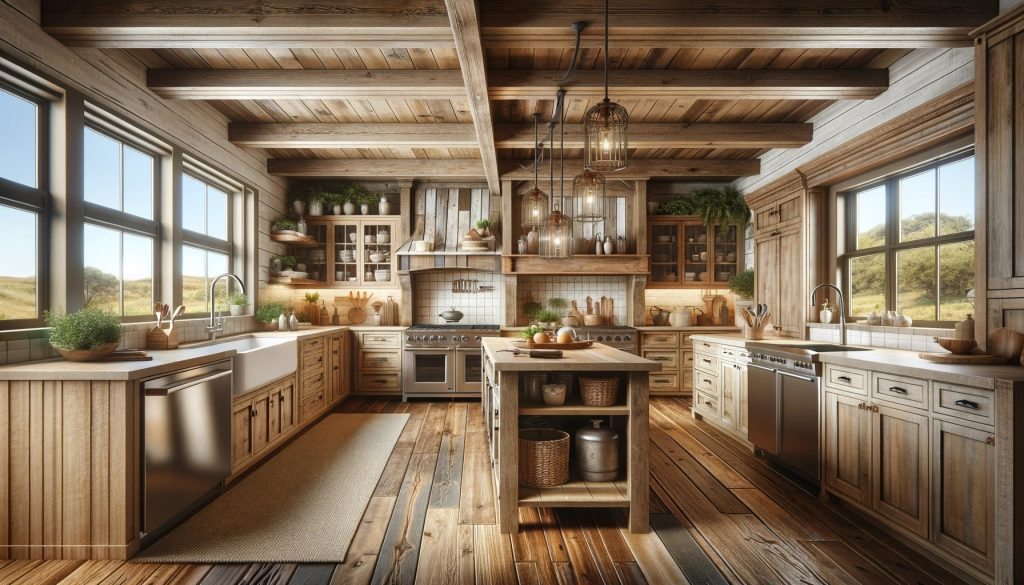
What are Rustic Kitchens?
Rustic kitchens are a design style that is characterized by natural materials, cozy finishes, and a laid-back atmosphere. They often feature elements such as exposed beams, shiplap walls, reclaimed wood countertops, and farmhouse sinks.
In a rustic kitchen, the focus is often on creating a space that feels comfortable and lived-in, rather than perfectly polished or formal. This means that rustic kitchens often feature materials that have a bit of patina or wear, such as reclaimed wood or antique fixtures. They may also incorporate natural elements, such as stone or brick, and have a more relaxed or informal layout compared to more traditional kitchen designs.
Overall, rustic kitchens are a popular choice for those looking to create a cozy, homely atmosphere in their kitchen space. They can be customized to fit a wide range of budgets and tastes and can be incorporated into both rural and urban homes.
Current Trends in Rustic Kitchen Design
Overall, the key to creating a successful rustic kitchen is to strike a balance between traditional and modern elements, and to choose materials and finishes that reflect your personal style. There are a few current trends in rustic kitchen design that are worth noting and which our expert designers can help you navigate. These include: –
- Mixing rustic and modern elements: Many rustic kitchens today incorporate modern elements, such as stainless steel appliances and sleek countertops, alongside more traditional rustic elements like reclaimed wood and antique fixtures. This can help to create a more balanced and cohesive design.
- Using natural materials: Rustic kitchens often feature natural materials like wood, stone, and brick, which can help to create a warm and welcoming atmosphere.
- Incorporating open shelving: Open shelving is a popular trend in rustic kitchen design, as it allows for easy access to dishes and cooking tools and also adds a rustic touch to the space.
- Embracing color: While many rustic kitchens feature neutral colors, some are incorporating pops of color, such as bold blue cabinets or brightly colored backsplashes, to add interest and personality to the space.
- Adding personal touches: Rustic kitchens often have a more personalized and lived-in feel, and many homeowners are choosing to incorporate personal touches, such as vintage finds or family heirlooms, into their design.
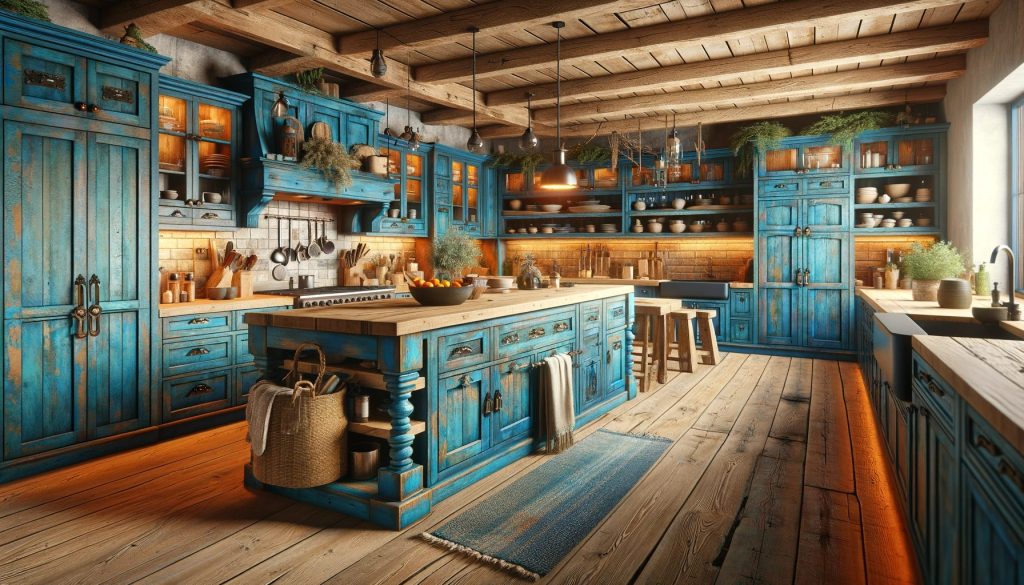
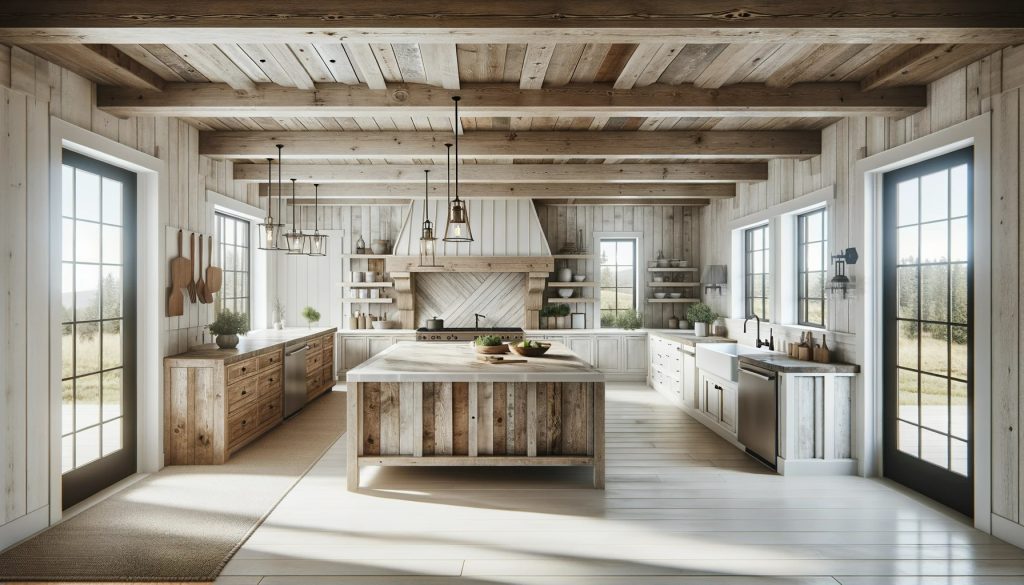
Designing Your Ideal Rustic Kitchen: Key Considerations
Working together with our expert kitchen designers we can work with you to come up with the perfect rustic kitchen look and layout for your home, taking the following into consideration: –
- Strategic Planning: Before you start designing your rustic kitchen, it’s important to have a clear plan in mind. This should include your budget, the layout of your space, and the specific design elements you want to incorporate.
- Incorporate Time-Honored Elements: One of the key features of rustic kitchen design is the use of vintage or antique elements. This can include elements like antique fixtures, vintage tiles, or reclaimed wood.
- Don’t forget about lighting: Proper lighting is essential in any kitchen, and rustic kitchens are no exception. Consider incorporating a mix of overhead lighting, task lighting, and accent lighting to create a well-lit and welcoming space.
- Personalize the space: Rustic kitchens are all about creating a warm and welcoming atmosphere, so don’t be afraid to add personal touches like vintage finds or family heirlooms to the design. This can help to make your rustic kitchen feel like a true reflection of your personal style.
How Much Do Rustic Kitchens Cost?
The cost of a rustic kitchen will depend on a number of factors, including the size of the space, the materials and finishes you choose, and any custom features or design elements you want to incorporate. On average, a rustic kitchen remodel can cost anywhere from $10,000 to $50,000, depending on the scope of the project. This can include things like new cabinets, countertops, backsplashes, flooring, and appliances.
If you are working with a smaller budget, there are ways to bring down the cost of your rustic kitchen remodel. For example, you could choose more affordable materials, such as laminate countertops instead of granite, or opt for budget-friendly appliances.
Overall, it’s important to set a budget and work with an expert designer to develop a plan that fits your financial constraints. This can help to ensure that you end up with a rustic kitchen that meets your needs and budget.
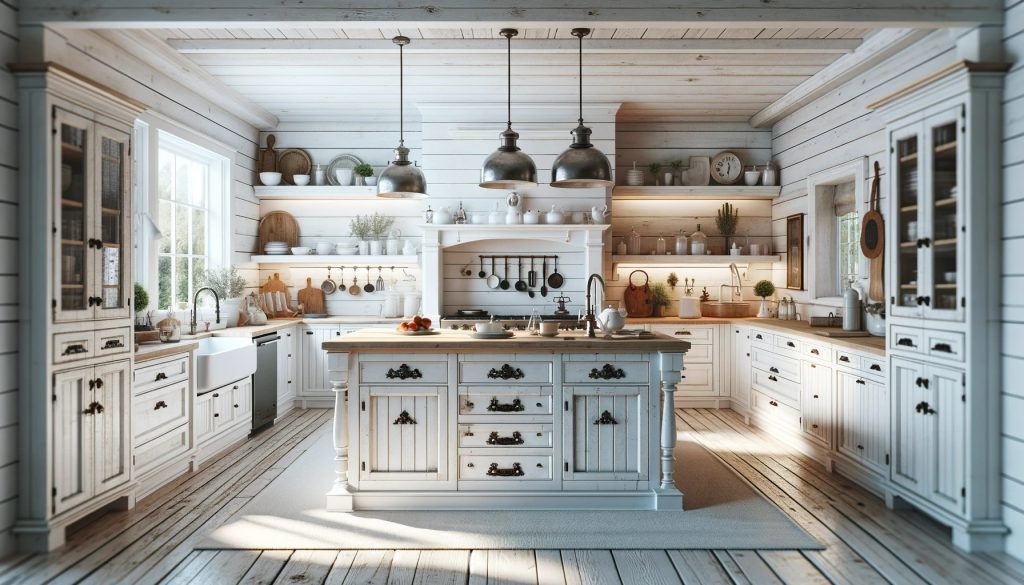
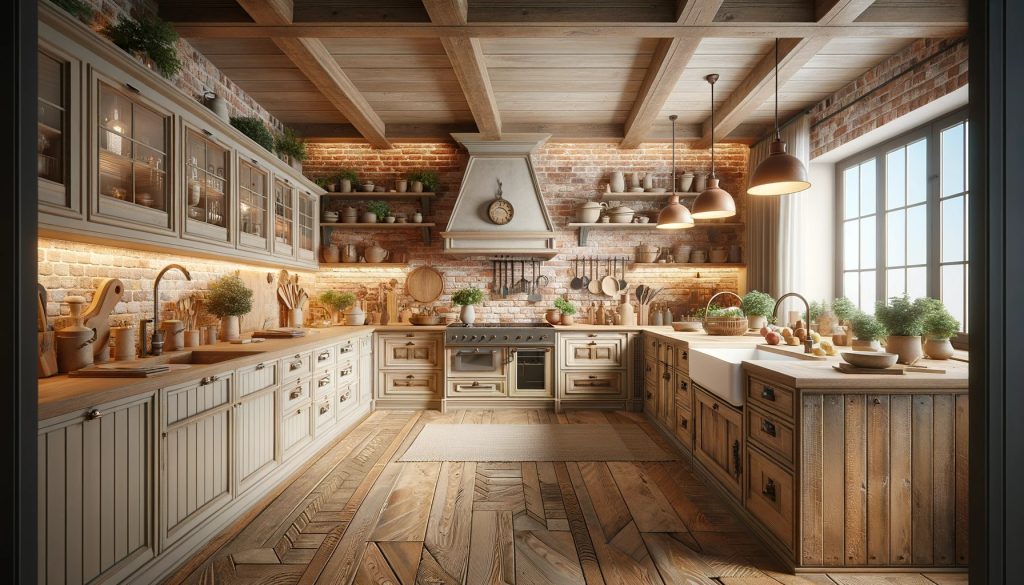
Potential Pitfalls When Designing a Rustic Kitchen
With years of experience to our name, there are not many scenarios our expert kitchen designers haven’t come across. This means we are well-placed to recognise – and avoid – the frequent pitfalls which present themselves when designing a rustic kitchen:-
- Overdoing it on the rustic touches: While it’s important to incorporate rustic elements into your kitchen design, it’s also important to avoid going overboard. Too many rustic touches can make the space feel cluttered or overwhelming, so it’s important to strike a balance.
- Ignoring function: While it’s important to focus on creating a warm and welcoming atmosphere in your rustic kitchen, it’s also important to ensure that the space is functional. This means considering planning elements like traffic flow, storage needs, and the placement of appliances and other features.
- Skimping on quality: While it’s important to stay within your budget, it’s also important to invest in high-quality materials and finishes. Cheap or low-quality materials may not hold up over time, and can end up costing more in the long run.
- Neglecting lighting: Proper lighting is essential in any kitchen, and rustic kitchens are no exception. Be sure to consider the type and placement of lighting, as well as the overall brightness of the space.
- Underestimating the importance of a layout: The layout of your rustic kitchen is crucial to its functionality. Be sure to consider the placement of appliances, countertops, and storage, and work with a designer or contractor to create a layout that makes sense for your space and needs.
Talk to Our Lead Wolf Kitchen Planning Experts Today
At all times it’s important to keep function and quality in mind when designing a rustic kitchen and to avoid making decisions that may compromise the overall look and feel of the space. Talk to our expert team at Lead Wolf and we will guide you every step of the way from concept to final completion of your beautiful new rustic kitchen space.
